As we mentioned in the previous article, in addition to the traditional coconut varieties available in Sri Lanka, a large number of coconut varieties have been produced so far. Mainly the Coconut Research Institute has introduced these improved coconut varieties. Each of these coconut varieties can be divided into two main categories for home gardening and commercial cultivation. Having a clear understanding of the planting density at the beginning and the planting material used for the varieties of coconut to be planted will contribute to the success of coconut cultivation.Please note that what we are referring to here is only for information on existing and recommended coconut varieties.
CRIC 60 / TT
• This is a plant belonging to the genus Tipica (T) and this type of seed coconut is produced by pollination among selected plants of the Sri Lanka tall variety.
• Mother and father plants are selected from Sri Lankan tall coconut trees (T).
• The above variety has been recommended to growers by the Coconut Research Institute since 1960.
• This variety is suitable for cultivation in all coconut-growing areas in Sri Lanka.
• Yields about 12000 nuts per hectare per year.
• Flowering begins 6-7 years after planting.
• One coconut gives about 225 grams of copra.
• High resistance to drought and disease and has a strong trunk.
• These varieties can be obtained from the nurseries registered with the Coconut Cultivation Board and the Coconut Research Institute and can be identified by the blue sticker.
• This is not a hybrid.

CRIC 65 / DT
• This is a hybrid of seeds obtained by pollinating dwarf coconuts (D) and local tall coconuts.
• Mother plants are Sri Lanka green-dwarf or Sri Lanka yellow-dwarf and father plants are selected from Sri Lankan tall coconut trees.
• According to the above, there are two main sub-types, namely
* Yellow dwarf x tall coconut (YD x T)
* Green dwarf x tall coconut (GD x T).
• The above variety has been recommended to growers by the Coconut Research Institute since 1965.
• This variety is not suitable for cultivation in all coconut-growing areas in Sri Lanka. Ideal for home gardens.
• Yields about 20,000 nuts per hectare per year (about 125 nuts per tree per year).
• Flowering begins 3-4 years after planting.
• Copra percentage is quite low and can be used as a suitable variety for the toddy industry.
• Yellow- CRIC 65 type coconut is as thick as tall (T) coconut and has high market value. It is also somewhat resistant to mite damage. But the yield is slightly lower than the green-CRIC 65 variety.
• Coconut seedlings are certified with a dark green sticker.
• Coconut seeds are produced in the Seed Coconut Garden belonging to the Coconut Research Institute located in Abakele area.
• This is a hybrid type.
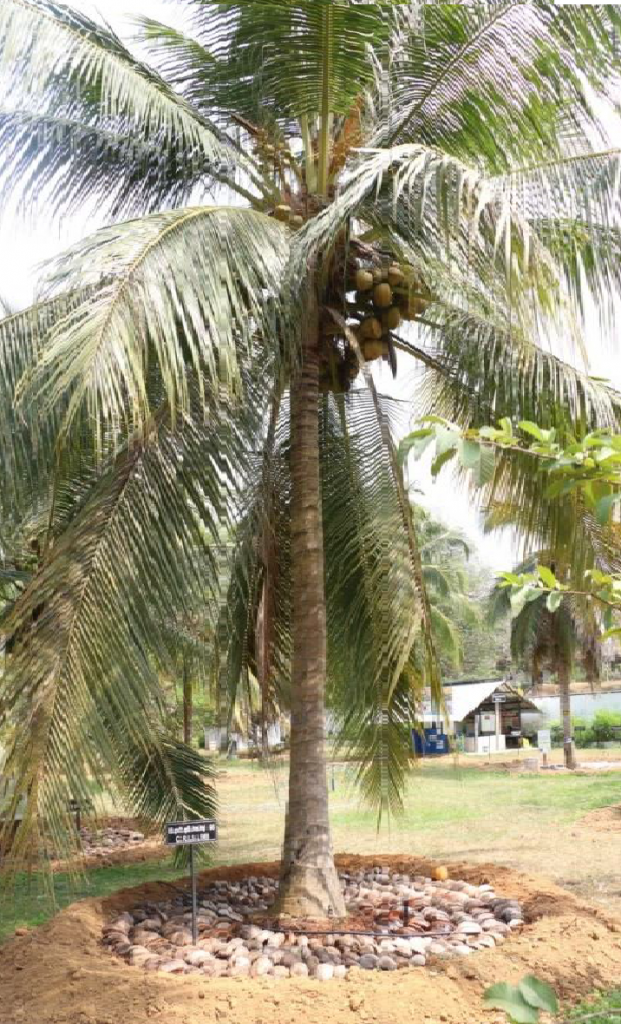
CRISL 98
• It is made from artificially pollinated seeds (hybrid) of tall coconut called Philippine San Ramon and native tall coconut.
• Mother plants are selected Sri Lankan tall coconut trees and father plants are Philippine San Ramon trees.
• The above variety has been recommended to growers since the 1998 National Coconut Replanting Program.
• This variety is suitable for cultivation in all coconut growing areas in Sri Lanka. But during prolonged droughts in the dry zone, the yield of CRISL 98 decreases and the plant tends to maintain its growth. Therefore, the Coconut Research Institute has now come up with the amendment as a variety recommended for cultivation only in the wet and wet intermediate regions of Sri Lanka.
• Yields about 12000 nuts per hectare per year.
• Flowering begins 5-6 years after planting.
• Coconut apricots are very thick and have a high percentage of copra. One coconut gives about 280-300 grams of copra.
• This variety has a stronger trunk than the native tall coconuts. The CRIC 60 variety is very similar in characteristics to its ability to withstand a variety of environmental conditions and fruit production.

Kapruwana / DGxSR
• It is made from artificially pollinated seeds (hybrid) between native green-dwarf coconut and Philippine San Ramon tall coconut.
• Mother plants are Sri Lankan green-dwarf coconut trees and father plants are Philippine San Ramon tall trees.
• The above variety has been recommended to growers by the Coconut Research Institute since 2004.
• This variety is suitable for home gardening.
• Yields about 20,000 nuts per hectare per year.
• Flowering begins 3-4 years after planting.
• Variety is certified with a coconut orange sticker.
• Coconut seeds are produced in the Seed Coconut Gardens belonging to the Coconut Research Institute located in Abakele and pallama areas.
• This is a hybrid type.

Kapsuwaya
• It is made from artificially pollinated seeds (hybrid) between native brown dwarf coconut and native tall coconut.
• Mother plants are Sri Lanka brown dwarf coconut trees and father plants are Sri Lanka tall trees.
• The above variety has been recommended to growers by the Coconut Research Institute since 2012.
• This variety is suitable for home gardening.
• Yields about 20,000 nuts per hectare per year.
• Flowering begins 3-4 years after planting.
• Variety is certified with a coconut brown sticker.
• Coconut seeds are produced in the Seed Coconut Garden belonging to the Coconut Research Institute located in Pallama area.
• CRIC 65 has similar characteristics.
• This is a hybrid type.
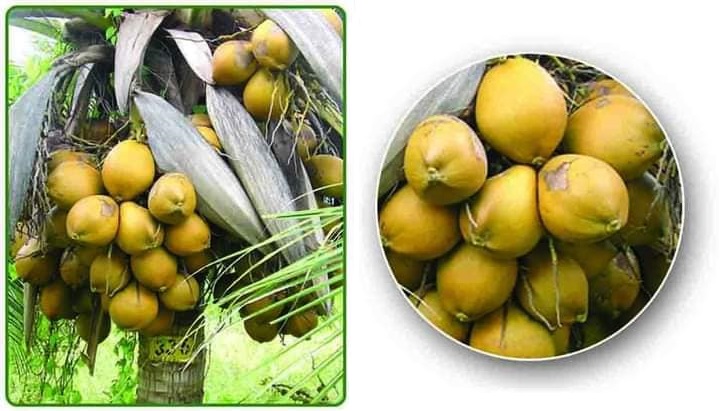
Kapseta / CRISL 2013 / DBxSR
• It is made from artificially pollinated seeds (hybrid) between the native brown dwarf coconut and the Philippine San Ramon tall coconut.
• Mother plants are Sri Lankan brown dwarf coconut trees and father plants are Philippine San Ramon tall trees.
• The above variety has also been recommended to growers by the Coconut Research Institute since 2012.
• This variety is also suitable for home gardening.
• Yields about 20,000 nuts per hectare per year.
• Flowering begins 3-4 years after planting.
• Due to the properties of San Ramon, the apricot is as thick as the fruit of tall Sri Lankan trees and gives a yield similar to CRIC 65.
• Variety is certified with a coconut black sticker.
• Coconut seeds are produced in the Seed Coconut Garden belonging to the Coconut Research Institute located in pallama area.
• This is a hybrid type.
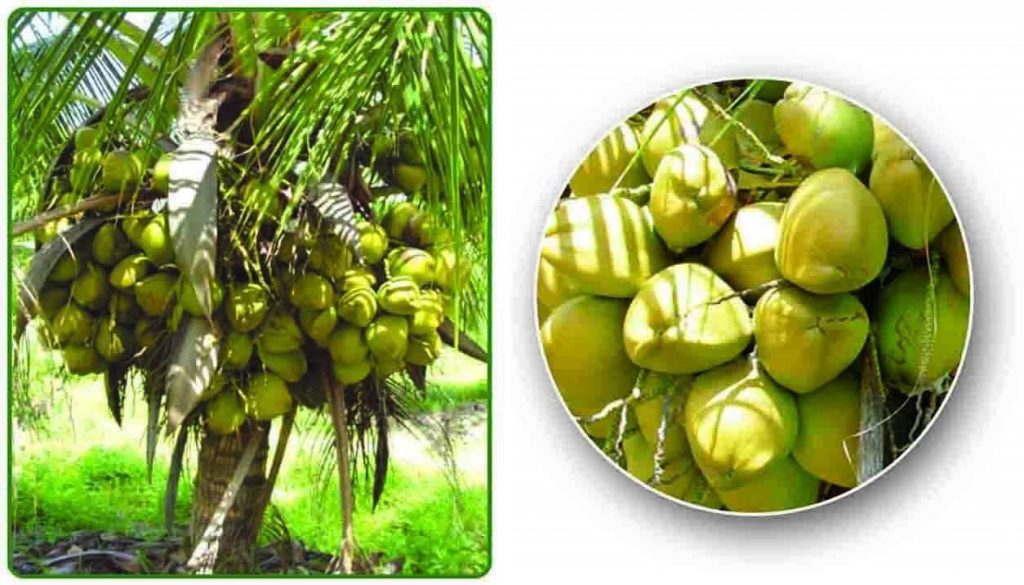
CRISL 2020 / T x MRD
• This is made from artificially pollinated seeds (hybrid) between Malaysian red dwarf coconut and native tall coconut.
• The mother plant is selected out of the tall coconut trees in Sri Lanka and the father plant is the Malaysian red dwarf tree.
• This has been a multi locational evaluation in Sri Lanka for the past 14 years and has been recommended to growers from 2020 onwards. This variety is recommended for large scale and home gardening due to its high potential for vegetative growth, flowering and nut yield.
• Artificial pollination has already started the production of seed coconuts at the Ambakele Seed Garden owned by the Coconut Research Institute.
• Further studies are being conducted to evaluate the drought tolerance and mite resistance of this variety.
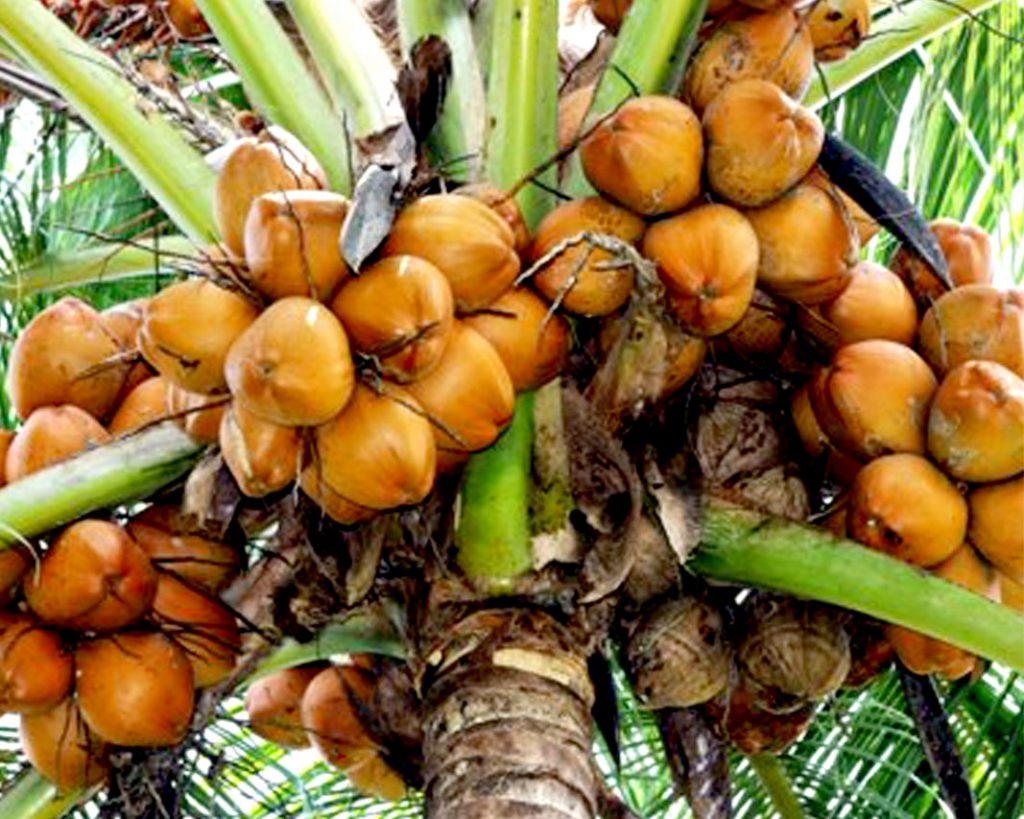
Morocc Usa (Morocc Tall)
• The seeds obtained from the coconut plants in the Coconut Garden of Morocco in Sri Lanka.
• This is not an exotic coconut.
• This variety is suitable for cultivation in wet and humid intermediate zones of Sri Lanka and is not suitable for dry zones.
• Yields about 11000 nuts per hectare per year.
• Flowering begins 5-6 years after planting.
• Variety is certified with a coconut white sticker.
• This is not a hybrid.
In addition, there are a number of improved varieties of coconut that are currently under research.

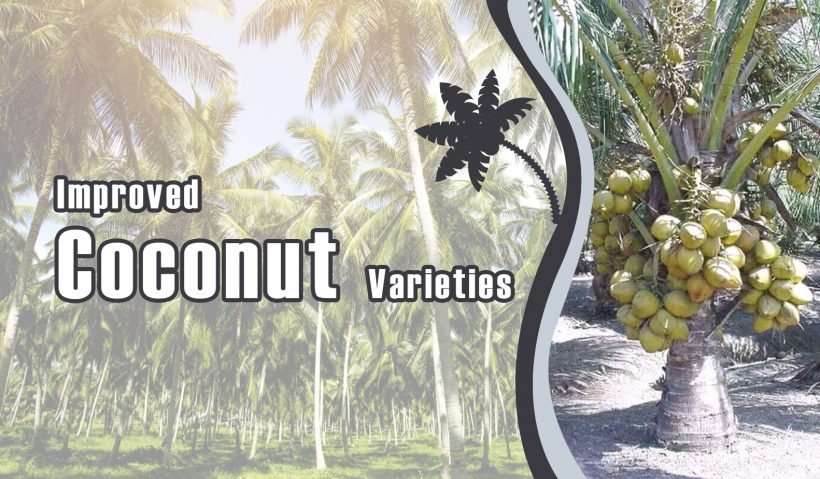
Leave a Reply